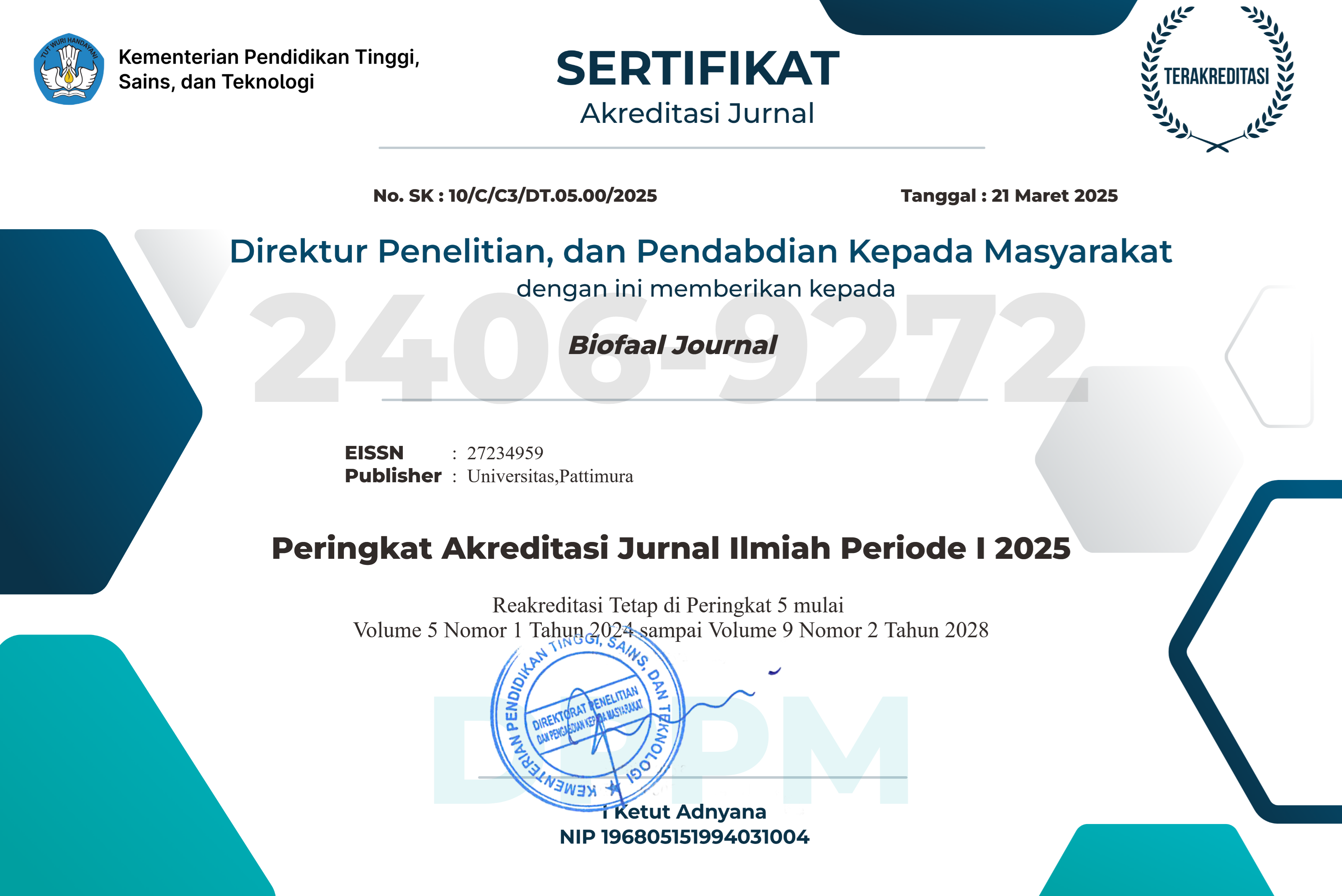FERMENTATION BIOTECHNOLOGY PRODUCTS IN THE FORM OF KOMBUCHA FLOWER OF KECOMBRANG (Etlingera elatior (JACK) R.M.SM.) AS ANTICOLESTEROL IN MALE WHITE MICE (Mus musculus L.) DDY STRAIN
Abstract
Cholesterol is a fatty substance found in the blood, produced by the liver and is needed by the body. Intake of foods with high cholesterol content can increase cholesterol levels in the blood (hypercholesterolemia). The Kecombrang flower plant (Etlingera elatior) contains flavonoids, saponins and triterpenoids which can reduce hypercholesterolemia. The aim of this study was to determine the effect of kecombrang flower fermentation on reducing blood cholesterol in male white mice (Mus musculus L.) DDY strain. The research method was carried out in a pre-post randomized experimental design. Tests for reducing blood cholesterol levels were carried out on 20 individual mice which were tested into 5 treatments, namely distilled water as a negative control (K-), simvastatin as a positive control (K+), kombucha fermented E. elatior concentration of 10% (P1), 20% (P2). ), and 30% (P3). The results of induction and decrease in blood cholesterol levels of mice were analyzed by ANOVA test (A = 0.05%). If it was significantly different, it was continued with Duncan's test. The results showed that there was a significant effect on reducing blood cholesterol levels in male white mice. The results of effective cholesterol levels for lowering cholesterol levels were 84.5 mg/dl from the initial cholesterol of 141.5 mg/dl at a concentration of 30%.
Downloads
Copyright (c) 2023 Usman Setiawan, Iin Yuwinani, Firman Rezaldi, Rina Nurmaulawati, M. Fariz Fadillah

This work is licensed under a Creative Commons Attribution-NonCommercial-ShareAlike 4.0 International License.
1. Author retain copyright and grant the journal right of first publication with the work simultaneously licensed under a creative commons attribution license that allow others to share the work within an acknowledgement of the work’s authorship and initial publication of this journal.
2. Authors are able to enter into separate, additional contractual arrangementfor the non-exclusive distribution of the journal’s published version of the work (e.g. acknowledgement of its initial publication in this journal).
3. Authors are permitted and encouraged to post their work online(e.g. in institutional repositories or on their websites) prior to and during the submission process, as it can lead to productive exchanges, as well as earlier and greater citation of published works.








